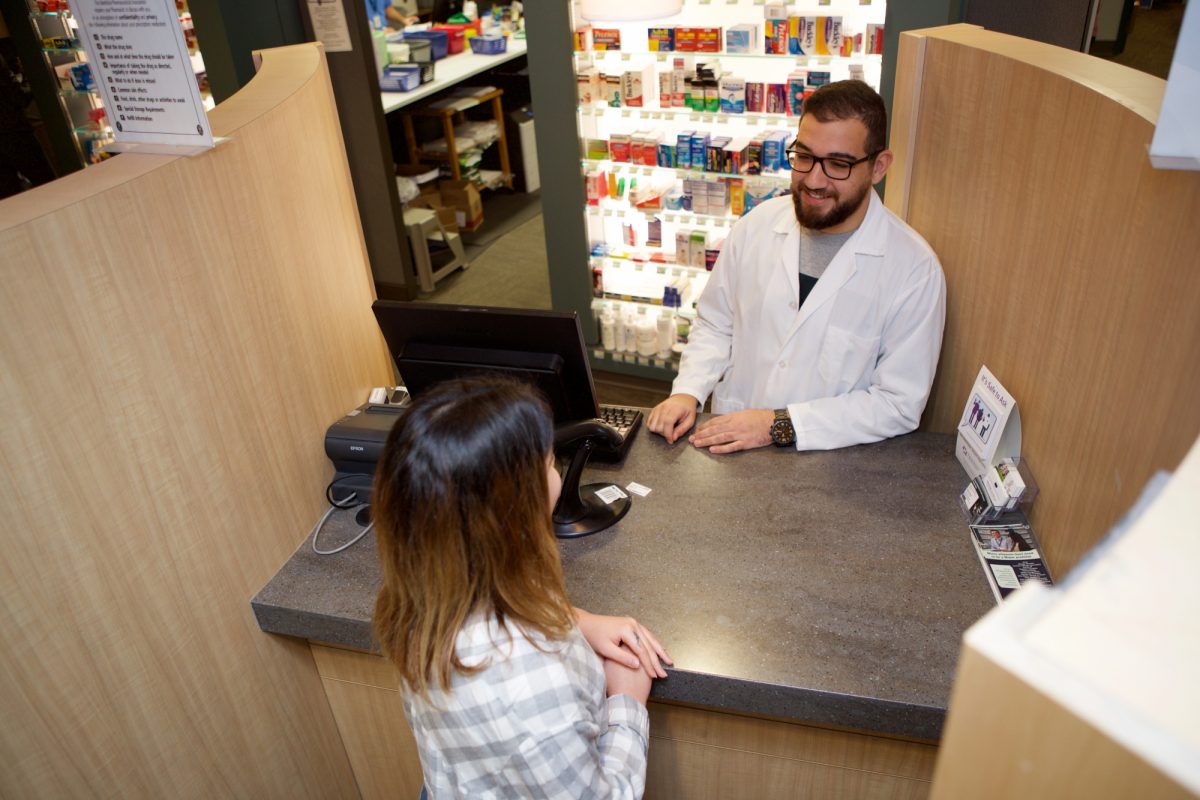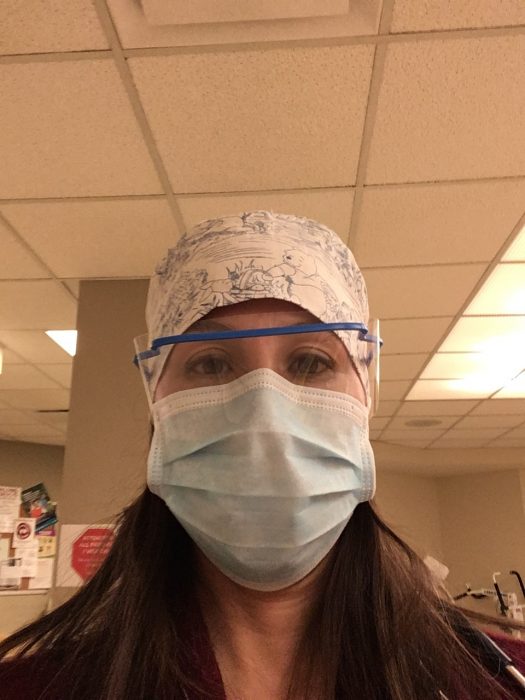
Pharmacists play essential role in COVID-19 response
As front-line health-care professionals, many pharmacists are playing an important role in patient care during the COVID-19 pandemic in community pharmacies, hospitals and other health-care settings including long-term care.
The pharmacist’s scope of practice includes helping address a variety of minor ailments and many pharmacists have taken additional education such as the diabetes educator training. This expanded scope provides patients with another source from which to receive reliable health advice and is helping to ease pressure on hospitals and clinics during this time.
“The pharmacist’s role has continued to change over the last decade and with our new Doctor of Pharmacy curriculum, it is very much geared to direct patient care,” says Dr. Lalitha Raman-Wilms, dean, College of Pharmacy, Rady Faculty of Health Sciences.
Ron Eros, director of experiential education at the College of Pharmacy, says that UM pharmacy graduates are well-positioned for these opportunities to support patients with their health-care needs.
“Pharmacists are an essential first line caregiver to provide medication information and the management of their medication therapies,” says Eros.

Alia Marcinkow
Alia Marcinkow, a 2014 B.Sc. (Pharm.) graduate and a community pharmacist at the Grandview and Gilbert Plains Pharmacies, says they have seen an increase in people asking for advice on how to treat ailments such as common colds, give injections like vaccines or treat various conditions.
“We’re the most easily accessible health-care professionals. You can walk into a pharmacy and talk to your pharmacist without waiting more than 10 minutes, whereas at the clinic or hospital you could be waiting for a longer amount of time,” says Marcinkow.
She says they have also seen an increase in delivery requests, and more people phoning in for advice and requests rather than coming in person.
Since the pandemic began, Marcinkow says pharmacists have spent a lot of time educating people about COVID-19 and reinforcing messaging about how to reduce the spread. She says this is important in a small community where some may think they don’t have to worry about the virus if it is not yet present in their community.
“We’re providing information, trying to debunk myths and reiterating the importance of staying home and social distancing,” she says.
Eros [B.Sc.(Pharm.)/88] says COVID-19 has altered some aspects of the way pharmacists do their jobs.
“The role has not changed, but the communication methods that pharmacists must adapt to provide information and product has changed rapidly as well as physical changes within the pharmacies to protect their colleagues and other employees,” he says.
These changes have also affected pharmacy students. Student experiential training in pharmacies and hospitals has been postponed due to the COVID-19 pandemic. Eros says training may resume in July and August and in the meantime many students are still gaining experience through summer employment opportunities through the province.

Nicole Nakatsu
For Nicole Nakatsu, a pharmacist at Seven Oaks Hospital, her role has evolved since the pandemic. She has been working on COVID-19 contingency planning for the hospital and the Winnipeg Regional Health Authority.
She is determining how medications can be grouped together for patients with COVID-19. This will limit the number of times a nurse enters the room to administer the medications, thus limiting exposure to colleagues and conserving personal protective equipment (PPE) and increasing efficiencies in the event of potential staffing shortages due to nurses being sick or in isolation.
Nakatsu is also working on a guidance document on how to take medication histories from patients virtually and which patients are the best candidates, which is another method to conserve PPE.
Both Marcinkow and Nakatsu say the biggest change in their roles has been the lack of close interaction with patients now that distancing measures are in place.
Nakatsu finds the amount of PPE they have to wear in the hospital to see patients, including masks, gloves and face shields, can present a barrier.
“It’s really tough on patients, everyone looks the same to them. It makes it a little bit harder to build those relationships with patients since they can’t see your face,” says Nakatsu.
Marcinkow points out that while distancing presents challenges, pharmacists continue to support their communities in any way they can.
“We’re essential workers and that hasn’t changed. Pharmacists really care about their patients and profession,” she says.
Nakatsu adds that pharmacists are still doing their job, as usual, as well as supporting the COVID-19 response.
“Pharmacists are working as part of the teams treating COVID-19 patients. We’re there to support our patients and our colleagues and get the best outcomes we can for our patients. We’re part of the team and intend to stay part of the team,” she says.






